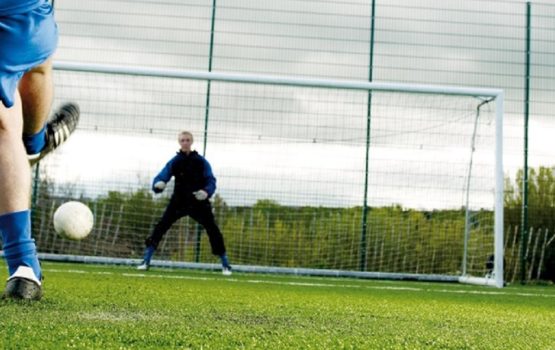A multi-use games area or MUGA can generate sizable levels of income if let out to the local community. Not only are they a great revenue generator but MUGAs also allow for multiple sports to be played on just one surface, excellent if you have space constraints, but they’re also durable enough to cope with heavy usage and most often, inclement weather conditions.
With advancements in technology and a multitude of pitch surfaces now available to choose from, which surface is most suitable for your venue?
Needle Punched Synthetic Grass
Of all the surfaces, needle punched synthetic grass has one of the simplest installation methods. If the surface is to be used as an athletics track then it can be installed directly on top of the sub base. If the surface will be used for sports it is sometimes recommended that a shock pad is laid prior to the final surface. The surface is rolled on top, just like a carpet, and sealed. The surface can incorporate line markings and is suitable for sports such as cricket, tennis, football and hockey. The ‘carpet’ comes in a variety of colours making it ideal for primary schools and nurseries but is also durable enough to cope with older age groups and hours of activity.
Third Generation (3G)
Of all of the surfaces, 3G offers the closest characteristics to playing on a natural surface. Unlike the needle punched surface described above, 3G surfaces have an in-built shock pad to minimise the risk of injury, useful as it’s most suited to football and rugby activities. The pile comes in varying lengths to accommodate different types of sports (shorter for hockey and longer for rugby) and because the surface acts so much like natural grass, it can be used for official matches as well as training which will maximise your opportunity to generate income from sports clubs who regularly high several nights of the week and hold matches at weekends. If laid correctly, a 3G pitch should be able to cope with heavy downpours making water-logged pitches a thing of the past.
Sand Dressed and Sand Filled Synthetic Grass
The manufacturing and installation process of both types of pitches is very similar, the main difference is in the amount of sand used to support the pile. Sand filled pitches have sand distributed across the pitch to within 1-2mm of the top of the pile. As more sand is required to maximise the performance of these types of pitches, maintenance can be more frequent and more costly. The surface is suitable for a variety of sports such as football, tennis and hockey and are more hard-wearing than sand dressed surfaces. The Sand dressed surfaces are less dense and more suitable for sports like tennis and other lower-impact games. With the sand settling nearer the base of the pile, balls tend to roll more naturally offering a good quality surface for recreational sport.
You can find more information about pitch surfaces at https://www.sportengland.org/media/4409/artificial-surfaces-for-outdoor-sports-2013.pdf.
